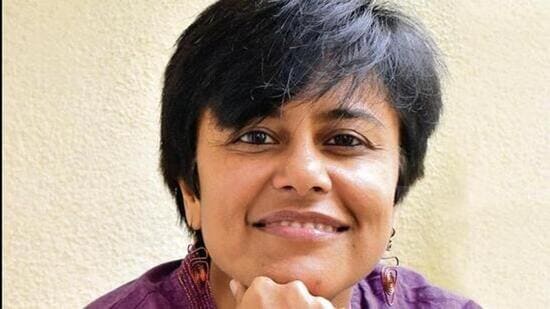Some eight hundred years ago, around the time that the Bhakti Movement was coming to full flower in south India, an unusual temple was raised on a rocky ridge in the centre of the southern peninsula.

Unusual, because its chief deity was neither Shiva nor Vishnu, between whom the loyalties of the south were evenly divided, but the Pandava queen, Draupadi. The temple was built by the Tigalas, a Tamil-speaking, water-worshipping, flower-growing people who believe themselves to be her descendants.
Three hundred years or so later, circa 1537 CE, a chieftain of Yelahanka called Kempegowda I was looking for a suitable site to build himself a new capital. How much of a role the temple played in his choice of location is moot, but Kempegowda not only built his city, which he named Bengaluru, around the temple, but also invited the Tigalas to come and live in its vicinity, in an enclave that came to be known as Tigalarapete.
The new city, keen to take advantage of its strategic location – equidistant as it was from the eastern and western coasts – concerned itself at first with trade and commerce rather than flowers and gardens. Perhaps the few Tigalas who were already in the city found work in Kempegowda’s ‘Kempu Thota’, located in the general region of today’s Lalbagh, where flowers were cultivated for worship, but not many more came to live here.
That happened around 1760, when the garden-loving Hyder Ali became the de facto ruler of the kingdom of Mysore and turned Kempu Thota into his personal pleasure garden, Lalbagh, laid out in the Mughal style, with terraces and water features and walking paths lined by cypress trees and flower beds. His son Tipu Sultan filled Lalbagh with trees both local and exotic, many of them fruit-bearing ones. Both Hyder and Tipu leaned heavily on the Tigalas’ green fingers to make the magic happen.
The rise in the numbers and status of the Tigala community brought the centuries-old temple to Draupadi into the centre of the city’s public life. The annual 11-day festival of Karaga, during which the Tigalas worship Draupadi as Adi Shakti, the feminine, dynamic aspect of the primordial cosmic energy, rose in prominence to become a vibrant community celebration that involved all its citizens. In a city that was not built along a river and was at a great distance from the sea, a festival that worshipped the Goddess in the form of water quickly found resonance.
This week, on the full moon night of Chaitra, the Tigalas will gather once again, as they have done for centuries, in the centre of the old city, at the temple to Draupadi (ironically called the Dharmaraya Swamy Temple, after her oldest husband), to welcome the goddess on her annual visit to the earth. The priest designated to be the bearer of the Karaga (unbaked mud pot), will wait patiently, in his saffron saree and bangles (for he is channelling the goddess herself), for her to manifest in the water in the pot.
And when she does, somewhere in the wee hours, the rejoicing will begin, and the ‘dik-di, dik-di’ chants of the sword-wielding Veerakumaras,her chosen protectors, will fill the air. Followed by the Veerakumaras, the priest, carrying the three-foot high, flower-bedecked Karaga on his head, will proceed to circumnavigate the old city through the milling crowds, paying his respects not only at various temples along the route, but also, in a time-honoured symbol of communal harmony that has defined this city, at the dargah of the 18th century Sufi saint Hazrat Tawakkal Mastan.
And thus, for yet another year, the city will remain blessed.
(Roopa Pai is a writer who has carried on a longtime love affair with her hometown Bengaluru)


